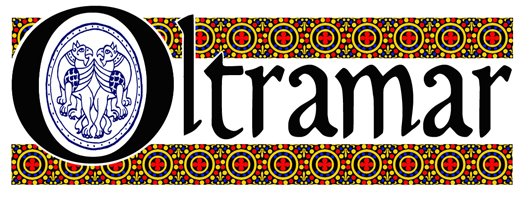Consider also that every piece of yarn, then, whether fine silk for a banner, coarse wool for carpets, linen for tent canvas and sails, and any fibre for clothing had to be spun on a drop spindle. For the uninitiated, a drop spindle is a stick with a weight on it. You twist a bit of wool into thread and tie it to the stick; then, hanging the stick-and-weight (spindle) from the thread, you spin it and that makes the unspun wool you're holding also twist into thread. This means that you need to control how much wool there is that'll be twisted, depending on whether you want a thick thread (say, for knitting or carpets) or a fine one (say, for a shirt or veil). When you've spun a couple of metres your hand is above your head and can't reach any further up and still keep the spindle spinning, so you need to stop and wind what you've spun onto the spindle. A loop over the end of the stick keeps the yarn from unwinding, and off you go again.
As a quick experiment, take a look at what you're wearing. Ignore knitted fabric (including t-shirt fabric), just look at the woven stuff. Count how many threads are going one way in a couple of centimetres (we'll call this the 'warp', in weaving terms) and how many are going across those threads (the 'weft'; and also just count a couple of centimetres). Measure how big your garment is, to find out how big the piece of fabric would need to be, then do some quick multiplication to work out how many metres of thread you would need to spin to make that garment... A quick guesstimate is that modern shirt uses a piece of fabric about 2 metres long and a metre wide. An average cotton fabric has about 25 threads per centimetre, so you would need 1 metre ( 100 cm) of groups of 25 threads = 2500 threads, by 2m in length; so 5,000m of thread one way; you would need that same amount of thread the other way, too ( think of the way the threads intersect as little squares), so that's another 5,000m... Allow that a really fast spinner might take say, 12 seconds to spin a couple of metres, wind it onto the spindle, fasten it and be ready to spin the next couple of metres, and you're looking at 10 metres of thread produced a minute and a thousand minutes of spinning to get enough yarn to weave the fabric. That's only a bit over 16 hours! Granted, that's for a fairly fine fabric (the sort we all wear for chemises, shirtes, veils, etc.) - the heavy wool a tunic might be made of could probably be spun in a few hours less...
In other words, fabric was time-consuming to make (and we haven't even discussed weaving it and sewing it!). If you think about the amount of fabric (including braid, blankets, sheets as well as clothing) and yarn (string, rope, lamp wicks, etc) a medieval household needed, you'll see that the average medieval woman spent a lot of her time spinning. Keep in mind that most household made their own pretty much everything, including fabric; only things that were beyond the abilities of the household to produce were bought. Fabric was sufficiently expensive that wages often included items of clothing, and cloth could be used as currency if it had a seal affixed to it attesting to its quality.
My point is, medieval women would have been spinning when they weren't doing other things - sewing, embroidering, cooking, farming, posing for manuscript illustrations... In twelve-odd years of re-enactment I've been to a lot of fairs and events, and I think the most women I've ever seen spinning has been, maybe, half a dozen, and one of them has been me! Come on, ladies, the devil makes work for idle hands yada yada, and if we're really looking reproduce that 'authentic' medieval atmosphere at a fair, then get thyselves to a spindle, learn to spin, display a very common piece of living history to the public, use the yarn in the construction of your gear - isn't that what re-enactment's all about?

This is a pic of my favourite spindle - favourite because it spins a really nice fine thread with which I can cardweave or embroider, and because part of it is the only 'authentic' piece of gear I own - a real twelfth century spindle whorl (that's the little lead weight on the stick) which I bought from an antiquities dealer. The whorl still has a slight zig-zag design on the outer face; the inner hole is slightly conical so it can be wedged onto a stick to spin with and then removed so the stick of yarn can be used as a shuttle for weaving.
I stress the word 'authentic', because re-enactors tend to use it to mean "historically accurate", rather than to refer to something that actually came from the period. I have a bit of a giggle at the whole 'Authenticity Debate' that rages on in re-enactment circles - is that shirt 'authentic', is that sword? Well, heads up guys - unless you've been ravaging museums and raiding antiquities dealers, none of your gear is "authentic" - at best, it's "period" or "historically accurate". Maybe it looks "authentic", although I prefer to have my gear looking like I use it, without 800 years of wear and depredations... English is a fine, rich language and using a word to mean something we already have words for is redundant, ambiguous, and contributes to the blandification of the language (like, "awesome", "fantastic", "terrific" now mean "good"). Heaven forbit anyone should be interested in the history of the language, let alone maintaining it; history is, after all, for old farts, geeks, boring people.... eep.

No comments:
Post a Comment